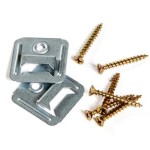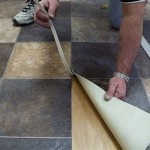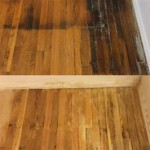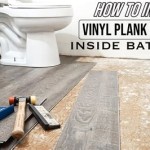Reclaimed Wood Look Laminate Flooring: An Affordable and Sustainable Aesthetic
Reclaimed wood has become increasingly popular in interior design, offering a unique blend of rustic charm and environmental consciousness. However, the cost and practical limitations associated with genuine reclaimed wood can be prohibitive for many homeowners. Reclaimed wood look laminate flooring provides an appealing alternative, capturing the visual essence of reclaimed wood while offering the benefits of laminate technology. This article explores the characteristics, advantages, selection criteria, and maintenance considerations of reclaimed wood look laminate flooring.
Laminate flooring, in general, is a multi-layered synthetic flooring product that is designed to mimic the appearance of natural materials such as wood, stone, or tile. It consists of a high-density fiberboard (HDF) or medium-density fiberboard (MDF) core, a decorative layer with a printed image, and a durable, transparent wear layer. The decorative layer is the key component in creating the reclaimed wood look, employing high-resolution photography and advanced printing techniques to replicate the textures, colors, and imperfections found in authentic reclaimed wood.
The appeal of reclaimed wood lies in its history and unique character. Each plank tells a story, bearing the marks of time, weathering, and previous use. Reclaimed wood look laminate flooring strives to emulate this aesthetic by incorporating features such as knots, grain variations, saw marks, nail holes, and color variations into the printed image. The success of the replication depends heavily on the quality of the printing process and the attention to detail in capturing these nuances.
Manufacturers often offer a variety of reclaimed wood look laminate flooring options, ranging from light and airy designs that mimic weathered barn wood to darker and more rustic styles that resemble reclaimed hardwood from industrial settings. The range of available styles allows homeowners to find a flooring option that complements their existing décor and personal preferences.
Advantages of Reclaimed Wood Look Laminate Flooring
Reclaimed wood look laminate flooring offers several advantages over both genuine reclaimed wood and other types of flooring. These advantages stem from the inherent properties of laminate technology and the specific visual characteristics it aims to replicate.
Cost-Effectiveness: One of the most significant advantages is its affordability. Genuine reclaimed wood can be expensive due to the labor involved in sourcing, processing, and preparing it for installation. Reclaimed wood look laminate flooring, on the other hand, is significantly more budget-friendly, making it accessible to a wider range of consumers. The lower material cost allows homeowners to achieve the desired aesthetic without breaking the bank.
Durability and Maintenance: Laminate flooring is known for its durability and resistance to scratches, stains, and fading. The wear layer, typically made of aluminum oxide, provides a protective barrier that withstands daily wear and tear. This makes reclaimed wood look laminate flooring ideal for high-traffic areas, such as living rooms, hallways, and kitchens. Furthermore, laminate flooring is easy to clean and maintain. Regular sweeping or vacuuming, along with occasional damp mopping, is usually sufficient to keep it looking its best. Unlike genuine reclaimed wood, it does not require special sealing or treatment to protect it from moisture or pests.
Ease of Installation: Laminate flooring is typically designed for easy installation, often featuring click-lock systems that allow planks to be connected without the need for nails or glue. This simplifies the installation process and makes it suitable for DIY projects. The ease of installation can save homeowners money on professional installation costs. Moreover, laminate flooring can be installed over a variety of subfloors, including concrete, plywood, and existing flooring, provided that the subfloor is level and structurally sound.
Environmental Sustainability: While not actual reclaimed wood, laminate flooring can still contribute to environmental sustainability. Many laminate flooring products are manufactured using recycled wood fibers and are certified by organizations such as the Forest Stewardship Council (FSC), ensuring that the wood used in the core comes from responsibly managed forests. Additionally, the durability of laminate flooring means that it is less likely to need replacement as frequently as other flooring options, reducing waste over the long term.
Key Considerations When Selecting Reclaimed Wood Look Laminate Flooring
Choosing the right reclaimed wood look laminate flooring requires careful consideration of several factors to ensure that it meets the specific needs and preferences of the homeowner. These factors include appearance, durability, water resistance, and installation.
Appearance and Style: The appearance of the laminate flooring should complement the overall aesthetic of the room and the existing décor. Consider the color, texture, and grain pattern of the laminate planks. Look for products that accurately replicate the nuances of reclaimed wood, such as knots, saw marks, and color variations. Pay attention to the size and shape of the planks, as these can affect the overall look of the floor. Wider planks tend to create a more spacious and modern feel, while narrower planks can evoke a more traditional and rustic look. It is beneficial to obtain samples of different laminate flooring options and compare them in the actual lighting conditions of the room to ensure that the color and texture are a good match.
AC Rating (Abrasion Class): The AC rating of laminate flooring indicates its resistance to abrasion and wear. A higher AC rating signifies greater durability and suitability for high-traffic areas. For residential use, an AC3 rating is generally sufficient for most rooms, while an AC4 or AC5 rating is recommended for areas with heavy foot traffic or commercial applications. Selecting a laminate flooring with an appropriate AC rating ensures that it will withstand daily wear and tear and maintain its appearance for years to come.
Water Resistance: While laminate flooring is generally water-resistant, it is not entirely waterproof. Exposure to standing water can cause the core to swell and delaminate. When choosing laminate flooring for areas prone to moisture, such as kitchens and bathrooms, look for products that are specifically labeled as water-resistant or waterproof. These products typically have a tighter core and a sealed surface that prevents water from penetrating. It is also important to properly seal the edges of the flooring during installation to prevent water from seeping underneath. Even with water-resistant laminate flooring, it is crucial to clean up spills promptly to prevent damage.
Thickness: The thickness of laminate flooring affects its durability, sound insulation, and underfoot comfort. Thicker laminate planks tend to be more durable and provide better sound insulation than thinner planks. They also feel more substantial underfoot, which can enhance the overall walking experience. Laminate flooring thickness typically ranges from 7mm to 12mm. For residential use, a thickness of 8mm or 10mm is generally recommended. For areas with heavy foot traffic or commercial applications, a thickness of 12mm may be preferred.
Maintenance and Care of Reclaimed Wood Look Laminate Flooring
Proper maintenance and care are essential for preserving the appearance and longevity of reclaimed wood look laminate flooring. Regular cleaning and preventative measures can help to protect the flooring from damage and keep it looking its best for years to come.
Regular Cleaning: Regular sweeping or vacuuming is essential to remove dirt, dust, and debris that can scratch the surface of the flooring. Use a soft-bristled broom or a vacuum cleaner with a felt brush attachment to avoid damaging the wear layer. Avoid using harsh chemicals or abrasive cleaners, as these can dull the finish and damage the surface of the flooring. Instead, use a pH-neutral laminate floor cleaner diluted according to the manufacturer's instructions. When mopping, use a damp mop and avoid saturating the flooring with water. Wipe up any spills immediately to prevent staining or water damage.
Preventative Measures: Taking preventative measures can help to protect laminate flooring from scratches, dents, and other types of damage. Place mats or rugs at entrances to trap dirt and debris before they are tracked onto the flooring. Use felt pads under furniture legs to prevent scratches and dents. Avoid wearing high heels or shoes with sharp objects on the flooring. Trim pets' nails regularly to prevent them from scratching the surface. When moving heavy objects, use furniture sliders to avoid damaging the flooring.
Repairing Damage: While laminate flooring is durable, it is not impervious to damage. Scratches, chips, and dents can occur over time, especially in high-traffic areas. Minor scratches can often be repaired using a laminate repair kit, which typically includes a color-matched filler and a sealant. For more significant damage, it may be necessary to replace the damaged plank. If the flooring was installed with a click-lock system, the damaged plank can usually be removed and replaced relatively easily. However, if the flooring was glued down, the repair process may be more complicated and require professional assistance.
By carefully considering the factors outlined above and following proper maintenance and care guidelines, homeowners can enjoy the beauty and durability of reclaimed wood look laminate flooring for many years to come, creating a stylish and sustainable living space at an affordable price.

Reclaimed Looking Laminate House Update Shanty 2 Chic

Reclaimed Oak Water Resistant Laminate Floor Golden Select

Barnwood Waterproof Laminate Flooring Select Surfaces

Antique Pine Boardwalk Hardwood Floors

Hot Flooring Trends Mixed Wood Species And Reclaimed Carpet Express

Reclaimed Looking Laminate House Update Flooring Installing Updating

Pros And Cons Of Reclaimed Lumber For Wood Flooring Charlotte

Reclaimed Oak Water Resistant Laminate Floor Golden Select

Reclaimed Oak Water Resistant Laminate Floor Golden Select

Style Selections Reclaimed Wood Medley 8 Mm T X 6 In W 50 L Plank Laminate Flooring 26 16 Sq Ft Carton The Department At Com
Related Posts








